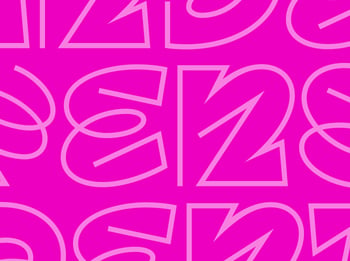How to use ChatGPT as a freelancer in Spain — Join the revolution!

on junio 19, 2023 • 9 min of reading

Freelancers are an innovative bunch. With inconsistent workloads and no manager to guide us, we have to find fresh new ways of saving time, attracting new clients, and boosting our revenue. But while savvy life hacks and networking strategies are powerful, if you know how to use ChatGPT as a freelancer, you can send your productivity into overdrive.
As a disclaimer, yes, we have read the warnings of AI potentially ending humanity and sat for two days straight staring into an existential abyss. Who hasn’t? But for the purposes of this article, we’re going to focus on the micro level — how ChatGPT can help freelancers like you on a daily basis.
We’ll give you some effective applications of artificial intelligence in freelancing work and offer advice on how to stay on the right side of the AI revolution. So whether you’re eager to find new freelance work automations or you’re petrified that you’re going to lose your job, this is the place for you.
What is ChatGPT and what can it do?
Unless you’ve been living under a rock, you’ll have heard of ChatGPT. But actually understanding what it is and what it does is another matter. In short, ChatGPT is a language model developed by OpenAI which uses advanced deep-learning techniques. In common parlance, this means it has been trained on around 45 terabytes of text from websites and books. With that data, it simply (well, not so simply) uses what it knows to predict the most appropriate next word.
At the time of writing, there are two versions of ChatGPT that freelancers can use:
| GPT-3.5 | GPT-4 | |
| Training | Able to consider 175 billion parameters depending on your prompt. | Able to consider 1 trillion parameters depending on your prompt. GPT-4 also received human and AI feedback from 3.5. |
| Cost | Totally free — great for getting used to the tool, but when servers are down, you’re first to suffer. | USD $20 per month. Worth considering if it saves you time or brings in more work. |
| Plugins | None at this level. | There are 436 plugins that can:
|
| Speed | Unbelievably fast. We’re talking 15 seconds for 500 words fast. | Still unbelievably fast, but to get a more creative, well-informed response, you sacrifice a little bit of speed compared to 3.5. |
It’s super easy to use. You just offer it a prompt like “Make a joke about freelancers in Spain” and the machine churns out a response that could easily be mistaken for human:
Critics might say that the responses it provides are often drab, boring, and unoriginal — much like that joke. But when you really know how to use ChatGPT prompts, it produces engaging content, original material, and even ready-to-use code. Much like human creativity comes from spotting unknown connections between two known points, ChatGPT analyzes huge amounts of text and generates new ideas at jaw-dropping speed.
How will ChatGPT and AI change freelancing? Pros and cons
There's no doubt that ChatGPT is transforming the world as we know it. And while artificial intelligence in freelancing provides some unbelievable shortcuts, it’s not all great news.
The pros
ChatGPT task automation is a HUGE time saver
Feed in a job description, tell ChatGPT you want a formal cover letter that hits the main keywords, and you’ve got a professional application in seconds. Got a client request? Feed it customer requests and it will generate detailed responses. ChatGPT works unbelievably quickly, and even if it doesn’t give you exactly what you need, it certainly does a lot of the legwork — perfect if you’ve got writer’s block.
All of this means you save countless hours a year, which allows you to get more done and keep your head clearer.
It makes you multilingual
If you’re a new expat freelancer in Spain, you don’t have to be overwhelmed by the language. Cut client emails and complex admin processes down to size by copying them into ChatGPT and get an almost-instant translation into your own language. You also have the potential to reach new markets as it can handle a huge amount of language combinations.
We’d still recommend learning the local lingo though. You can’t bring your laptop along to a first date and expect to see them again.
You can learn new skills for free
It might sound clickbaity, but ChatGPT is that one tool that everyone in the education industry hates. With smart prompts, you can learn a whole host of digital skills and test your knowledge with increasingly complex quiz questions. In a world where adaptability and cross-industry knowledge are prized, learning how to use ChatGPT to upgrade your freelance skills is a silver bullet.
The cons
Inaccurate information and hallucinations
ChatGPT is a machine learning model, which means it generates responses based on patterns it has learned from its training data on the internet. As we all know, the internet is rife with inaccurate information, and AI tools like ChatGPT may sometimes generate content that "sounds good" but may not be entirely accurate.
Did you know that 67% of people believe everything they see on the internet. Well it’s not true, I just made it up. And ChatGPT is frequently guilty of generating convenient, but unverifiable statistics too. These “hallucinations” mean you have to cast a keen eye over your work before delivering it, or you’ll quickly start losing trust.
Overreliance on AI
OK, this maybe isn’t a negative for ChatGPT itself, but in my experience (and that of plenty of my freelancer friends), it’s very easy to use AI too much. For writers pumping out a lot of content, it can produce boring, generic, and uninspiring text.
SEO experts are undecided on whether Google’s mysterious algorithms can recognize and penalize AI-produced content. However, what they know for certain is that boring, repetitive, and irrelevant articles lack authority and so are suitably punished by search engines.
ChatGPT is restricted in certain areas
ChatGPT is great, but we’re still very early in the AI revolution, and there are understandably limits to its performance.
- It hasn’t been fed any information after 2021. If you want to know the Oscar winners of 2022, it will come clean and tell you it doesn’t have their names. That said, GPT-4 does have Bing plugin that gives it access to websites, although it doesn’t always manage to read content.
- It has a limit of around 500 words, so it won’t blast out a 2000-word article for you 20 minutes before your deadline. To stick to the word count, it often skimps out on detail and sometimes cuts itself short midway through a sentence.
- It won’t be controversial, either by saying anything that is even remotely rude or trying to avoid giving a political opinion at all costs.
Will ChatGPT replace freelancers?
In early 2023, there was a strong trend on sites like LinkedIn for articles waxing lyrical about how AI can never replace a truly human touch. While the trend of articles claiming AI will never replace the human touch has waned (and been replaced by optimistic new claims that AI will actually create more jobs) ChatGPT's stance remains the same:
Here’s another limitation of AI tools like ChatGPT: they often generate responses that users want to hear. But as someone who has already been squeezed out of work by AI, I can’t offer any such false reassurances.
A short story on how AI takes jobs, from yours truly
Just a few years ago, most of my freelance income came from translation. It was shocking to see how quickly machine translation went from comical Google attempts to the scary power of DeepL. Sure, it wasn’t perfect, and neither was I. But one thing DeepL would always beat me at was speed.
I knew that if I had discovered DeepL, my clients would have heard about it too. And it didn’t take long for them to work out how to harness that power and inform me that most of my work would now be machine translation post-editing (MTPE), paid at a fraction of my previous rates. I ended up putting in extensive hours for ever-decreasing pay.
That’s a long-winded way of saying, yes, ChatGPT will replace freelancers. Once companies learn how to handle it, writers, social media strategists, and more will inevitably lose jobs. I’ve already seen job adverts looking for ChatGPT Content Managers — a simple way of yeeting your writing team out the door and paying one strategist who is also the post-editor. Unfortunately, it’s hard to argue with the business sense of that.
You don’t have to agree with me that ChatGPT will replace freelancers. But if you bury your head in the sand and pretend AI doesn’t exist, your clients will replace you soon enough anyway.
Our top tip for survival: Learn how to use ChatGPT as a freelancer to stay ahead of the curve
Sure, we can’t predict the future, but there is reason to believe that freelancers are actually in the best position to thrive in the AI revolution. There have been massive employment cuts globally, most notably in major tech companies — so much for the myth of infinite jobs popping up in Silicon Valley. Almost 4000 US jobs were lost to artificial intelligence in the month of May alone, so freelance life no longer seems like the risky option.
When salaried employees lose their jobs, they have nothing to fall back on. But as freelancers, we’re always on the lookout for ways to improve our situation. Whether that means learning new skills or finding new clients, we’re adaptable creatures who know how to survive when times get tough. Just like cockroaches, but you know…better looking.
So as artificial intelligence threatens our professional existence, it’s time for us to engage that cockroach brain and learn how to use ChatGPT to prosper in a world of rapid change. AI tools like ChatGPT and Midjourney will continue to improve exponentially, taking up an ever-increasing amount of the job market. The only winners out of this are those who use AI to their advantage, so let’s look at some productivity-boosting examples.
ChatGPT use cases for freelancers in Spain
If you’re wondering how to use ChatGPT as a freelancer — and you haven’t already asked the AI yourself — here is where you can find out. As we’ll see, it’s not just for writers. Almost every line of work can benefit from an AI assistant.
Create and analyze your code
Even the least tech-minded individuals can learn how to use ChatGPT to write code. But developers have a level of expertise that brings context to the code they’re writing. For example, you could ask it to write standard code for a responsive mobile app, taking a large chunk of work out of your day. Retroactively, you can input faulty code and ask the AI to identify why your user interface hasn’t updated as expected.
As a freelance developer, you usually don’t have a boss you can instantly ask for guidance. But if you know how to use ChatGPT, you can solve your bugs without having to turn to Stack Overflow for your answers. You can even get it to do the mind-numbing task of creating documentation.
Eliminate the time-consuming work of writing
Whether you don’t know where to start with a piece of work or you’ve taken on too much work this week, ChatGPT can help you brainstorm content ideas, create outlines for your articles, and even write drafts. Don’t rely on it too much though! AI-generated content can be dry, and if you’re asking it to write more than its word limit allows, it will cut some of the key talking points that make your work interesting.
At the end of your creative process, you can also feed your text into ChatGPT and ask for feedback. Curate a prompt to eliminate overused words, liven up your drab sentences, and link your sections together more smoothly.
Revolutionize your content creation processes
A freelance content creator’s job can get understandably stressful. Having to switch your voice for a bunch of different brands, get approval from 50 different people and think about content you’ll publish months in the future, there’s a lot to take care of.
If you haven’t already looked into how to use ChatGPT as a freelance content creator, here are a few tips:
- Get a diverse range of content ideas to jump-start your creative process.
- Create content calendars that reflect the company’s objectives as well as local and international events.
- Draft scripts and posts that are fine-tuned to each platform you use.
Take on more digital marketing work
Digital marketers can use ChatGPT for writing engaging ad copy, brainstorming marketing campaign ideas, or even responding to customer inquiries on social media.
If you’re in the SEO game, you can also get a list of keyword suggestions and optimizations. From there, you can start creating large amounts of content and build a professional-looking blog at a lightning pace. But remember it is limited to 2021, so you’re not going to get the most up-to-date keyword trends.
Personalize your educational and coaching content
There are endless possibilities of ChatGPT for freelancers in education and coaching, with personalization at the top of the list. Rather than creating one-size-fits-all content, you can create material that doubles down on difficult concepts or that reflects your student’s reality. This means you can skip language learning tropes like how to ask for a table in a restaurant and produce tailor-made exercises in no time.
Manage your projects and your time
Remote work in Spain involves a lot of willpower to resist shutting your laptop and wandering down to the beach. And while that willpower can only come through personal discipline, ChatGPT can help you draft a daily schedule and even brainstorm ways to optimize your workflow. Tell the AI what your end goal is and how much time you have to complete it, and it will become your very own project management assistant.
Simplify your personal life too
We’ve already mentioned that it’s a great linguistic tool for understanding complex websites and emails. But being a freelancer in Spain isn’t all about work — you’re here to enjoy the lifestyle too! It’s always best to scan your community for their opinions, but when you’re in a rush and need a quick fix, ChatGPT is like Google on steroids.
Xolo Slack Community: Discover how other freelancers are using ChatGPT
In summary, there’s no benefit in hiding away from ChatGPT. AI is here to stay, and if you use it to its full potential, it is a powerful addition to your toolkit. With the examples we’ve provided of how to use ChatGPT as a freelancer, you can get more clients, take on more work, and have more free time for yourself.
But remember, technology evolves at a rapid pace, and staying on top of these changes can be a challenge. That's why having a supportive community where you can share experiences, learn from others, and stay updated on the latest trends can be incredibly valuable.
The Xolo Slack Community is just that — a vibrant and diverse community of freelancers who are exploring the frontier of AI-assisted work. From sharing unique ways they're using ChatGPT, and discussing the latest updates to troubleshooting together, it’s a collaborative and social platform full of freelancers like you.
Whether you're a seasoned freelancer or just starting out, you can join the conversation and get to know some like-minded freelancers in Spain in the process. Sign up for the Xolo Slack Community today!
Would you like to be part of a community just for freelancers based in Spain?
A place to ask questions, share resources, find job opportunities and connect with your fellow fiercely independent freelancers!


About James
James McKenna has been a freelancer since 2017, working in subtitling, translation, and his main passion — writing. He loves nothing more than falling down a rabbit hole, a habit that has helped him specialize in areas as diverse as biotech, climate change, higher education, and business strategy.
Based in Barcelona, James learned the ropes the hard way, making mistakes that turned into valuable learning experiences. After working hard to establish himself, he is now working smart, and is always on the lookout for ways to streamline his business.